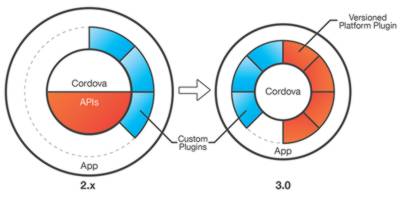| Adobe PhoneGap 3.0 Released |
| Written by Kay Ewbank | |||
| Monday, 22 July 2013 | |||
|
There’s a new version of PhoneGap, the open-source framework for creating mobile apps. The new version has better tools, a new plug-in architecture, and new APIs. PhoneGap is based on Apache Cordova, and gives developers a way to create apps for mobile devices using HTML 5, CSS3 and JavaScript rather than writing device-specific code. The layout rendering of the resulting apps is carried out using web views, but the apps can make use of the specific device APIs. Apps execute within wrappers targeted to each platform, and rely on standards-compliant API bindings to access each device's sensors, data, and network status.
The main changes to the new version start with the ability to choose a subset of APIs to minimize the size of your apps. You can also choose to have plug-ins automatically installed and removed. The tools have been improved. According to the blog post announcing the new version, this makes it easier to quickly shift between native platforms without learning new vocabularies by aligning the native platform CLI tooling. The tools also now integrate with PhoneGap/Build. New platforms have been added to PhoneGap, which now supports iOS6, Windows Phone 8, Blackberry 10, and of course Android. Work on iOS7 is ongoing, and support for Firefox OS and Ubuntu is promised “soon”. Two new APIs have also been added to the new version; an InAppBrowser (formerly known as the ChildBrowser plugin) and Globalization API. The Globalization API obtains information and performs operations specific to the user's locale and timezone, while the InAppBrowser is a web browser that displays in the app. Another improvement is the ability to directly install PhoneGap from the Node Package Manager (NPM), so overcoming the need to download a ZIP file every time PhoneGap has a new release.
More Information
Related ArticlesPhoneGap 1.0 - the smart way to create apps?
Comments
or email your comment to: comments@i-programmer.info
To be informed about new articles on I Programmer, install the I Programmer Toolbar, subscribe to the RSS feed, follow us on, Twitter, Facebook, Google+ or Linkedin, or sign up for our weekly newsletter.
|
|||
| Last Updated ( Monday, 22 July 2013 ) |


